Lithuanian Air Force
| Lithuanian Air Force Lietuvos karinės oro pajėgos | |
|---|---|
| File:Lt14.gif Insignia of the Lithuanian Air Force | |
| Active | 1919 - 1940, 1992 - present |
| Country | |
| Branch | Air force |
| Type | Military aviation |
| Role | To survey, guard and defend the airspace of Lithuania, to support the Lithuanian Land and Naval Forces, to carry out SAR and special operations, to airlift cargo and personnel. |
| Size | More than 1,000 professional military servicemen and non-military personnel; More than 20 aircraft. |
| Part of | Lithuanian Armed Forces |
| Garrison/HQ | Kaunas |
| Anniversaries | 23 November 1918 2 January 1991 |
| Commanders | |
| Commander | Brigadier General Artūras Leita |
| Deputy Commander | Lieutenant Colonel Vidmantas Raklevičius |
| Chief of Staff | Lieutenant Colonel Sigitas Gudeika |
| Notable commanders | Brigadier General Antanas Gustaitis |
| Insignia | |
| Roundel |  |
| Flag |  |
| Aircraft flown | |
| Attack | L-39ZA |
| Multirole helicopter | Mi-8MTV-1, Mi-8T, Mi-8PS |
| Trainer | L-39C, Yak-18T, Yak-52 |
| Transport | C-27J, L-410, An-2 |
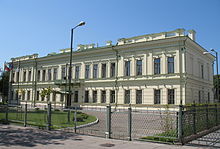

Lithuanian Air Force or LAF (Lithuanian: Lietuvos karinės oro pajėgos (LKOP)) is the military aviation branch of the Lithuanian armed forces. It is formed from professional military servicemen and non-military personnel. Units are located at Zokniai airport near the city Šiauliai.
History
On 23 January 1992, the Minister of Defense signed an order establishing the staff for the Aviation Base of the Aviation Service. But an actual base in the Šiauliai airport territory (Barysiai airfield) was not established until March, when according the ordinance of the Government of Lithuanian Republic, all the infrastructure, buildings, territory and 24 An-2 aircraft were passed from ”Lithuanian Airlines" to the Aviation Service of the Ministry of Defense in January 1992.
In 12 June 1992, the first time after regaining the independence of Lithuania, An-2 aircraft, marked with the double cross of Vytis on its wings – the distinguishing sign of Lithuanian Air Force – took off from Barysiai airfield. This date is considered to be the Aviation Base foundation date. In February 1993 four L-39C Albatros aircraft were brought from Kyrgyzstan.
After 1 March 1993 Aviation Service was reformed to the Lithuanian Air Force and Aviation Base was renamed the First Aviation Base of the Lithuanian Air Force.In January 1994 Lithuania officially applied for NATO membership. From 1995 to 1999, according a decree of Lithuanian Government the First Aviation Base was relocated to Zokniai airfield nearby Šiauliai, which was used for fighter wing, radio-electronic fight and reconnaissance squadrons dislocation during the Soviet occupation.
According to the decree of the Minister of Defense of the Republic of Lithuania Linas Linkevičius, the First Aviation Base and the Second Aviation Base were reorganized into the Lithuanian Air Force Aviation Base as of 1 October 2004. Up to 2004, there were only light attack jet aircraft and transport aircraft located at the Air Base, after the reconstruction of First and Second Air Bases, helicopters are located at the Air Base too.
Structure
The Lithuanian Air Force Headquarters and the Airspace Surveillance and Control Command are located in Kaunas, while the Air Space Control Centre is stationed nearby in Karmėlava. Air Base and Air Force Armament and Equipment Repair Depot are located in Šiauliai. The Air defence battalion, formed in 2000, is located in the Radviliškis district.
Air Base
The staff, aircraft and equipment of the Air Base participated in many international training missions abroad and at home. Main tasks of the Air Base are:
- Host nation Support for NATO Baltic Air Policing forces;
- Search and Rescue;
- Passenger, cargo and VIP transport;
- Air medical evacuation;
- Personnel deployment;
- Army and Navy air support;
- Air base personnel combat readiness training.
Air Defence Battalion
The Air Defence Battalion’s primary missions include:
- Defend state facilities of vital importance against military aviation attacks from the air in low and medium altitude;
- Support land forces in fighting against ground armoured technical equipment and in other events;
- Train military personnel in carrying out combat tasks.
Development of infrastructure is one key missions of the Air Defence Battalion currently in the stage of development.
Airspace Surveillance and Control Command
The Airspace Surveillance and Control Command works closely with the Baltic States Air Surveillance System, BALTNET. The appropriate legal documentation of the BALTNET project was developed, the Reciprocal Memorandum of Understanding concerning military personnel training was signed among Lithuanian, Estonian, Latvian, and Danish Ministries of Defence. The Regional Air Spaces Surveillance Co-ordination Centre (RASSCC), headquarters of the BALTNET project, was established in the LTAF Airspace Control Centre and has been fully functioning since early 2000. Military personnel from all the three Baltic States serve as air surveillance operators at the centre and rotate according to national timetables. The Commander of the centre is appointed for two years and represents one of the Baltic States.
Armament and Equipment Repair Depot
The main tasks of Armament and Equipment Repair Depot:
- To perform periodical works of maintenance as well as minor and medium repair of LAF armament and equipment outdoors;
- To modernize LAF equipment according to contemporary aviation needs and NATO standards;
- To prepare technical requirements for organizing competitions of centralized repair, modernization and purchasing of equipment;
- To perform periodical works of maintenance, supervision and repair of life-saving equipment used in search and rescue works;
- Under necessity, to perform works of maintenance and minor repair of special equipment of NATO partners, performing the function of air police in Lithuania. ;
- Under necessity to provide proper room for ensuring minor repair operations of airplanes (QRA) of NATO partners;
- Raise the level of military and professional staff preparation in order to be able in future perform periodic maintenance and repair of western type aircraft.
Baltic Air Policing
After Lithuania joined NATO organization back in 2004, its (alongside Latvia's and Estonia's) air space is protected by NATO. NATO members provide usually 4 fighter aircraft, based in Lithuania, to police the Baltic States’ airspace. The deployments rotate between NATO members (that started in March 2004 with Belgium Air Force F-16s) and most NATO members that operate fighters have made a deployment to Lithuania. The Baltic States are considering in the near future to protect their airspace on their own.
Modernisation
In line with the set priorities, the Lithuanian Air Force are implementing modernisation plans.
Since Independence in 1991, the Lithuanian Air force has bought 3 new C-27J Spartan military transport aircraft. They have replaced the older Soviet-era An-26.
Two L-39ZA aircraft underwent extension of technical resources in Romania 2007. Maintenance works included exhaustive check-up of the aircraft units and major engine repairs. New navigation equipment GNS 530 was installed and radio communication sets changed in pilot cabins. These planes are used to train fighter control officers in air policing mission and fighter command officers.[1].
Also conducted was a complex program of capital overhaul, upgrade and modernisation of the Air Force's helicopters Mi-8 and twin engine short-range transport aircraft L-410[2][3]. There are also plans put forward by the Lithuanian Government to renew the helicopter fleet in 2010-2011.
Lithuanian air force leaders have held unofficial discussions with their Czech counterparts over a possible future deal to acquire surplus Aero L-159 Alca advanced light combat aircraft.[4]
Aircraft
Current
Template:Standard table
! style="text-align: center; background: lightsteelblue;"|Aircraft
! style="text-align: center; background: lightsteelblue;"|Photo
! style="text-align: center; background: lightsteelblue;"|Origin
! style="text-align: center; background: lightsteelblue;"|Type
! style="text-align: center; background: lightsteelblue;"|Versions
! style="text-align: center; background: lightsteelblue;"|In service
! style="text-align: center; background: lightsteelblue;"|Notes
|-----
| Aero L-39 Albatros
|  |
| ![]() Czechoslovakia
| Trainer\light attack
| L-39ZA
| 1(2)
| One aircraft crashed on 30 August 2011 after a collision with a French Mirage 2000C. Both pilots ejected.[5]
Czechoslovakia
| Trainer\light attack
| L-39ZA
| 1(2)
| One aircraft crashed on 30 August 2011 after a collision with a French Mirage 2000C. Both pilots ejected.[5]
|-----
| Alenia C-27J Spartan
| 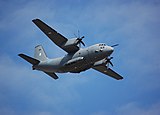 |
| ![]() Italy
| Medium-sized military transport
| C-27J
| 3
| All three delivered.
|-----
| Let L-410 Turbolet
|
Italy
| Medium-sized military transport
| C-27J
| 3
| All three delivered.
|-----
| Let L-410 Turbolet
|  |
| ![]() Czechoslovakia
| Short-range transport
| L-410UVP
| 2
| Under modernization
|-----
| Antonov An-2
|
Czechoslovakia
| Short-range transport
| L-410UVP
| 2
| Under modernization
|-----
| Antonov An-2
|  |
| ![]() Soviet Union
| Light utility
| An-2
| 5
| Used for paratrooper training.
|-----
| Yakovlev Yak-18
|
Soviet Union
| Light utility
| An-2
| 5
| Used for paratrooper training.
|-----
| Yakovlev Yak-18
|  |
| ![]() Soviet Union
| Military primary trainer
| Yak-18T
| 1
|
|-----
| Yakovlev Yak-52
|
Soviet Union
| Military primary trainer
| Yak-18T
| 1
|
|-----
| Yakovlev Yak-52
| 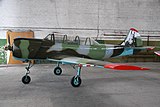 |
| ![]() Soviet Union
| Military primary trainer
| Yak-52
| 5
|
|-----
| rowspan="3"|Mil Mi-8
| rowspan="3"|
Soviet Union
| Military primary trainer
| Yak-52
| 5
|
|-----
| rowspan="3"|Mil Mi-8
| rowspan="3"| | rowspan="3"|
| rowspan="3"|![]() Soviet Union
| rowspan="3"|Utility helicopter
| Mi-8MTV-1
| 1
| One Mi-8MTV was modernized to NATO standard. Increasing fuel capacity and installing new avionics.
|-----
| Mi-8T
| 4
| 3 in storage. All fitted for Search and Rescue operations. 2 of them are always on duty in Kaunas and Nemirseta.
|-----
| Mi-8PS
| 1
| VIP modification.
|-----
! style="align: center; background: #E6E6E6;" colspan="7" | NATO strategic air transport joint program
|-----
| Boeing C-17 Globemaster III
|
Soviet Union
| rowspan="3"|Utility helicopter
| Mi-8MTV-1
| 1
| One Mi-8MTV was modernized to NATO standard. Increasing fuel capacity and installing new avionics.
|-----
| Mi-8T
| 4
| 3 in storage. All fitted for Search and Rescue operations. 2 of them are always on duty in Kaunas and Nemirseta.
|-----
| Mi-8PS
| 1
| VIP modification.
|-----
! style="align: center; background: #E6E6E6;" colspan="7" | NATO strategic air transport joint program
|-----
| Boeing C-17 Globemaster III
| 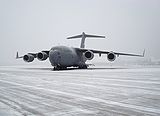 |
| ![]() United States
| Large military strategic transport
| C-17ER
| 3
| Participating in C-17 program Lithuania is provided 45 hours for flying per year using C-17 aircraft for airlift to mission area, and also contribute while creating joint NATO capabilities.[6]
|-----
! style="align: center; background: #E6E6E6;" colspan="7" | NATO Alliance Ground Surveillance joint program
|-----
| Northrop Grumman RQ-4 Global Hawk
| File:Globalhawk.750pix.jpg
|
United States
| Large military strategic transport
| C-17ER
| 3
| Participating in C-17 program Lithuania is provided 45 hours for flying per year using C-17 aircraft for airlift to mission area, and also contribute while creating joint NATO capabilities.[6]
|-----
! style="align: center; background: #E6E6E6;" colspan="7" | NATO Alliance Ground Surveillance joint program
|-----
| Northrop Grumman RQ-4 Global Hawk
| File:Globalhawk.750pix.jpg
| ![]() United States
| Unmanned aerial vehicle
| RQ-4B
| 0 (+8 on order)
| Lithuania along with 14 other nations has signed a memorandum of understanding to advance the NATO Alliance Ground Surveillance project.[7]
|-----
|}
United States
| Unmanned aerial vehicle
| RQ-4B
| 0 (+8 on order)
| Lithuania along with 14 other nations has signed a memorandum of understanding to advance the NATO Alliance Ground Surveillance project.[7]
|-----
|}
Retired ( phased out of service)
- 20+ x Antonov An-2 «Colt»
 ;
; - 1 x Antonov An-24 «Coke»
 - retired in 1996, currently on display in the Lithuanian Aviation Museum;
- retired in 1996, currently on display in the Lithuanian Aviation Museum; - 3 x Antonov An-26 «Curl»
 - were replaced by Spartans, last one retired 2008;
- were replaced by Spartans, last one retired 2008; - 4 x Aero L-39C «Albatros»
 - one was a complete write-off, the second one was transferred to the Vilnius Gediminas Technical University Antanas Gustaitis Aviation Institute [8] Last two are in storage with no plans to restore;
- one was a complete write-off, the second one was transferred to the Vilnius Gediminas Technical University Antanas Gustaitis Aviation Institute [8] Last two are in storage with no plans to restore; - 5 x Mil Mi-2 «Hoplite»
 - last one retired 1999;
- last one retired 1999; - 4 x PZL-104 Wilga
 -.
-.
-
Ex-LAF Antonov An-24 «Coke»
-
Ex-LAF Mil Mi-2 «Hoplite»
-
Ex-LAF Antonov An-26 «Curl»
See also
- Baltic Air Policing
- Air defence battalion
- Airspace Surveillance and Control Command
- Aviation Unit of State Border Guard Service
- List of airports in Lithuania
External links
References
Notes
- ^ Air Force pilots fly L-39 ZA aircraft again (sic)
- ^ Template:Lt icon"Paieškos ir gelbėjimo darbus vykdys kapitaliai suremontuotas sraigtasparnis".
{{cite web}}:|first=missing|last=(help) - ^ "Lithuanian manufacturers for the military" (PDF).
{{cite web}}:|first=missing|last=(help) - ^ Lithuania shows early interest in L-159 acquisition
- ^ Near Šiauliai encountered two military planes, one of them crashed
- ^ Meeting ceremony of the first NATO Strategic Transport Aircraft C-17 in Hungary
- ^ NATO ground surveillance deal moves forward after 15-nation agreement
- ^ Template:Lt icon Brg. gen. Artūras Leita Lietuvos Karinės oro pajėgos atitinka šiandienos poreikius, Periodinis karinės publicistikos, karo istorijos ir mokslo žurnalas "Kardas", No.3 2009.
Sources
Bibliography
- Humberstone, Richard. Lithuanian Air Force, 1918-1940 (Insignia Air Force Special No.1). London: Blue Rider Publishing, 1996.
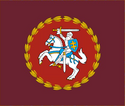 |
| Lithuanian Armed Forces |
|---|
| Components |
| Administration |
| Personnel |
| Equipment |
| History |
| Lithuania portal |




